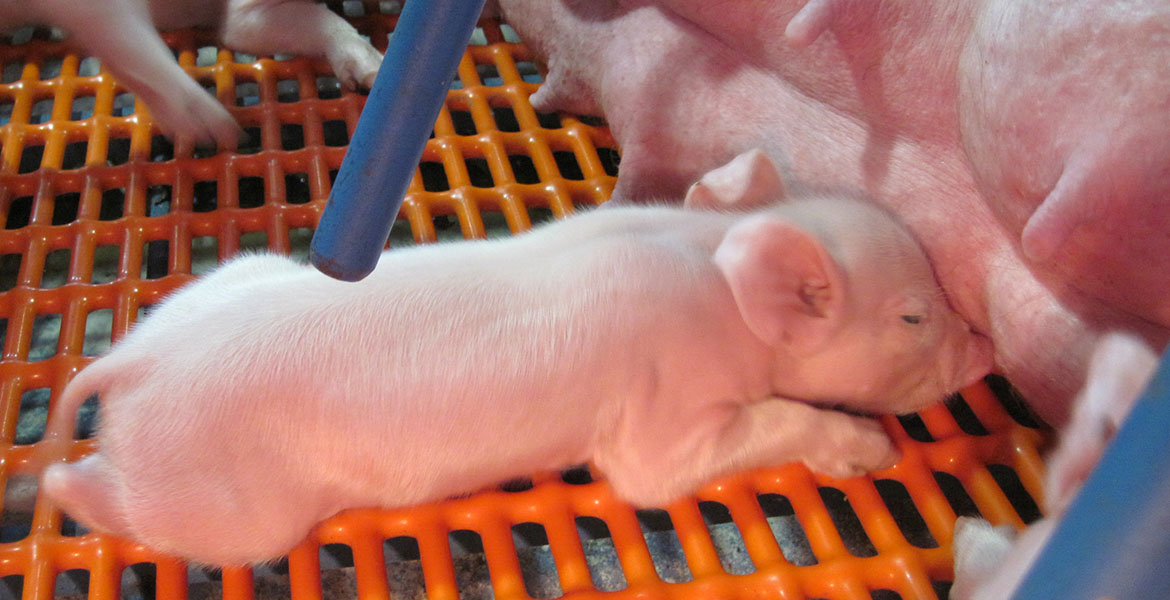



It’s Farrowing Season
Monitoring pregnant sows and gilts is very critical for a better outcome for both mothers and babies.
During the last month of pregnancy, monitor sows’ and gilts’ body condition, feed them proper nutrition and keep them cool through the hot summer months. Vaccinate them to prevent baby pig or neonatal diarrheal diseases. Deworm them if necessary three to four weeks before they are due to farrow. Wash sows/gilts with water one week before their due date so they are clean when they are moved into farrowing crates.
Monitor their labor to make sure the delivery progresses. Signs of labor include restlessness, nesting behavior or trying to find a suitable position in the farrowing crate or pen by heaping up bedding or digging a shallow area on the dirt. Respiratory rate increases, and sometimes pigs will breathe through open mouths. Also the vulva swells and softens, sows/gilts exhibit abdominal contractions, mammary gland develops and finally milk let down. Milk let down is usually within 24 hours of farrowing.
During the late summer and fall, sows/gilts undergo exhaustion during labor. There are two types of exhaustion: primary or secondary. During primary exhaustion or inertia, the sow/gilt does not go into active labor. Causes may include overconditioned sows/gilts, hot and humid weather, mineral deficiencies and genetics. Secondary exhaustion or inertia may be caused by exhaustion or fatigue during the farrowing process. Secondary exhaustion is mainly seen in sows or gilts with large litters, difficulty pushing oversized piglets or gilts with small pelvic sizes.
The active birthing process lasts anywhere from 30 minutes to four hours, with 15-minute intervals between piglets. Usually two piglets will come out rapidly, one from each horn. Normally 55 percent are born forward or anterior with forelimbs by their side and 45 percent are born backwards or posterior with hind limbs extended backwards. If delivery is not progressing, a sow is straining for 30 minutes with no piglet delivered, the cervix is not dilated, the piglet is too big for the birth canal, or the sow has not passed her placenta or afterbirth, help is needed. Contact your veterinarian.
After piglets are delivered, perform the following tips to increase their chances for survival:
- Clean mucus and membranes from the piglet’s head with a clean cloth or paper towel.
- Gently insert something, such as a piece of straw, a short distance into the nose to clear the nasal passage and induce the piglet to sneeze.
- Spray or dip the newborn piglet’s navel with a 7 percent tincture of iodine or chlorhexidine/alcohol drying agent to prevent navel illness.
- Since piglets are susceptible to hypothermia or low body temperature the first two weeks of life, place piglets back in the farrowing crate under a heat lamp or on a heating pad to keep them warm.
- Check the sow’s birth canal for any other piglet left in the uterus and for tears to the birth canal.
- Make sure the sow passes the afterbirth or placenta within 30 minutes.
- Check with your veterinarian about antibiotics use. Most antibiotics available for food animal usage are not approved for swine.
- Give the sow/gilt oxytocin to help her pass her placenta, to involute the uterus, pass her afterbirth or placenta and prevent infection of the uterus.
- As a good precaution, clean up any afterbirth from the delivery site to reduce the possible spread of disease.
The first 12 hours after birth are the most critical period. Place piglets in a warm, clean and dry farrowing crate with their mother. This allows newborns full access to colostrum to get the antibodies available for protection against diseases. Make sure the piglets are nursing their mother within three hours after birth. If the piglet is weak, consult your veterinarian. Colostrum should be given, either by passing a small feeding tube or by a syringe. Piglets need to gain 15 percent of their body weight within 24 hours.






